China West Normal University
China West Normal University
Xihua Normal University is a key university in Sichuan Province. The school was founded in 1946 and began at the National Northeast University during the Anti-Japanese War. At the beginning of the Anti-Japanese War, Northeast University moved to Santai County, Sichuan Province to run a school. After the victory of the War of Resistance Against Japan, Northeast University moved back to Shenyang. With the support of ten salt farms in 36 counties of northern Sichuan and people of insight from all walks of life, some teachers and students of Northeast University of Sichuan origin founded a private North Sichuan Agricultural and Industrial College at the original site of Santai. In 1949, the private North Sichuan Agricultural and Industrial College merged with the Xishan Academy founded by Mr. Wu Feibai, a famous Mohist expert, to form the private North Sichuan University. In 1950, the school moved to Nanchong and merged with the North Sichuan Academy of Literature to form a public North Sichuan University. In 1952, the school merged some specialties of East Sichuan Education College (formerly Rural Construction College), Sichuan University and West China University to form Sichuan Normal College. In 1956, the school was divided into two parts. The part left in Nanchong was Nanchong Teachers College. In 1958, the school was upgraded to Nanchong Normal College. In 1989, the name of Sichuan Normal University was restored. In 2003, the school was renamed "Xihua Normal University". After more than 70 years of development, the school has formed its motto of "diligence, realism, dedication and innovation", "cultivation and cultivation of spirit", "quality school, talent school, characteristic school" and the campus spirit of "rigorous school management, rigorous school management, hard struggle, pioneering and enterprising". At present, it has developed into a comprehensive university with complete disciplines, excellent school-running conditions, strong teachers and fruitful achievements in teaching and scientific research. It is a base for basic education teacher training, in-service teacher training, basic education and higher education research in Sichuan Province. It is praised as "a good place to study and a good place to select talents". Where to go.
The school is a high-level comprehensive university with distinctive characteristics of teacher education. There are 75 undergraduate majors, including literature, history, education, science, engineering, agriculture, management, economics, law, art and other 10 disciplines. The strength and advantages of the school disciplines are outstanding. Ecology, Politics, Chinese Language and Literature, Chemistry, Marxist Theory, Education, Astronomy, Chinese History and other disciplines have important influence in China. The disciplines of Ecology and Ecological Governance, Politics and Social Governance are included in the first-class discipline construction in Sichuan Province. The school began to recruit postgraduates in 1979. There are 17 first-level disciplines authorized by master's degree, 8 types authorized by master's professional degree, 8 disciplines jointly cultivating doctoral students, and 1 post-doctoral innovation practice base. There are currently one key laboratory of the Ministry of Education, one key laboratory of Sichuan Province, four key laboratories of universities in Sichuan Province, three high-level research teams of Social Sciences at provincial level and three scientific and technological innovation teams of young people in Sichuan Province. It has established the Southwest Branch of the National Freshwater Fishery Engineering Technology Center, the Bamboo Resources Cultivation Engineering Technology Research Center of the State Forestry Administration, the Bamboo Conservation Demonstration Base for Giant Panda Staple Food, the Sichuan Education Development Research Center, the Sichuan University Students'Ideological and Political Education Research Center, the Regional Cultural Research Center, the Xiashihuang Research Center and the local archives. With the Document Research Center, the Sports Culture Development Center of the General Administration of Sports, the Sports Culture Research Base of Pakistan Research Center and other provincial and ministerial key research bases, the National Environmental Protection Science Popularization Base, the National University Practice Education Base, the North Sichuan History and Culture Social Science Popularization Base, and the Northeast Sichuan Aeronautical Model Science Popularization Education Base have been established. Popular science education and social practice bases such as education base, social practice base of environmental education in primary and secondary schools in Sichuan Province. It has the Sichuan Organizational Rehabilitation Materials Engineering Technology Co-innovation Center, Provincial University Science Park and Ecology Research Institute, Public Policy Research Institute, Rural Revitalization Strategic Development Research Institute and other scientific and technological transformation and social services research institutions.
The school has brought together a large number of famous teachers. Wu Feibai, a famous Mohist expert, Zheng Linchuan, Zhou Xubai, Fu Pingqian, a philosophical expert Li Yaoxian, and Hu Jinling, the founder of panda ecology and biology, are well-known experts and scholars who have accumulated a strong academic foundation for the development of the school. The school has more than 2500 staff, more than 1000 teachers with advanced professional and technical titles, and more than 1600 teachers with doctoral, master's and above degrees. Existing state-level outstanding contributions to young and middle-aged experts, experts enjoying special allowances from the Government of the State Council, national "ten thousand people plan", excellent talents of the Ministry of Education in the new century, famous cultural experts of the Ministry of Central Propaganda and "four batches of" talents project, Sichuan "thousand people plan", Sichuan "ten thousand people plan", Sichuan academic and technological belt There are 98 outstanding talents at all levels, such as leaders and reserve candidates, outstanding experts of Sichuan Province, etc. There are one advanced individual in the national teacher ethics, six famous teachers in Sichuan Province, and one academician specially appointed from China Academy of Engineering.
The school now has more than 33000 full-time undergraduates and postgraduates. Since the Twelfth Five-Year Plan, it has undertaken 398 national-level "undergraduate teaching quality and teaching reform projects" and 672 provincial-level projects: 7 national-level specialties, 1 national-level top-quality curriculum, 1 national-level teaching team, 1 national-level excellent agricultural and forestry talent training plan, and 1 national-level excellent journalism and communication talent training plan. One national comprehensive professional reform project, one national "Twelfth Five-Year Plan" and one national "Thirteenth Five-Year Plan" textbook, one national excellent video open course and 292 national innovative entrepreneurship training programs for college students; 60 educational cooperation projects of the Ministry of Education have won 77 national and provincial awards for educational and teaching achievements, among which the state has won 77 awards. Two second-class awards for teaching achievements at the first level. Over the past 70 years, the school has trained nearly 300,000 talents of all levels and types for the society. They have worked diligently in their respective posts and made important contributions to economic and social development.
Since the Twelfth Five-Year Plan, the school has undertaken 3542 scientific research projects at all levels, including the National Social Science Foundation's major projects, "File collation and research of the southern county government in the Qing Dynasty", the National Social Science Foundation, the National Natural Science Foundation and other state-level projects such as the collation, chronology and comprehensive research of Chinese literature in the 5th and 11th centuries. 202 projects, 307 provincial and ministerial projects; 17 871 research papers were published in academic journals at home and abroad, of which 814 papers were included in SCI (52 papers were selected in ESI high cited database, many papers were selected in ESI "hot papers list"), 1131 papers from journals of CSSCI and CSCD sources; 297 academic monographs were published, and 2 scientific research achievements were selected in "Country". Achievements Library of Philosophy and Social Sciences of Families; First Prize of National Science and Technology Progress; Second Prize of Chinese Agricultural Science and Technology Award of Ministry of Agriculture (Cooperation); First Prize of Sichuan Science and Technology Progress; Third Prize; First Prize of Guizhou Science and Technology Achievement Transformation; First Prize of Humanities of Ministry of Education (Cooperation); One second-class award for outstanding achievements in social sciences, two honorary awards for outstanding achievements in Social Sciences in Sichuan Province, four first-class awards, eight second-class awards (one for cooperation), 38 third-class awards (one for cooperation), 43 national invention patents and 69 utility model patents.
The school insists on opening up, pays attention to the cooperation between school and land, school-enterprise and school-school, and actively provides human resources support and scientific and technological innovation services for local economic and social development. It has signed cooperation agreements with Nanchong, Mianyang, Deyang, Bazhong and Aba, with Chongqing Airport Group Co., Ltd. and Sichuan Commercial Architecture Design Institute Co., Ltd. and with Lance University of France and VIA University of Denmark, and with other cities and states, and has set up the "attachment of West China Normal University". It belongs to Bazhong Experimental Middle School, Deyang Affiliated Middle School of West China Normal University, and has signed cooperation agreements with China Giant Panda Research Center and Sichuan Giant Panda Ecology and Cultural Construction Promotion Association, Wolong, Bee Bucket Village and Tang Guohe National Nature Reserves. Give full play to the advantages of the discipline, set up a technological research and development platform with the Institute of Aquatic Biology and other research institutions of the Academy of Sciences, took the lead in the national panda investigation and research projects of the State Forestry Administration for many times, and worked with local governments on grassroots governance, party history research and publicity in Sichuan-Shaanxi Soviet Area, archives collation and research of southern county magistrates in the Qing Dynasty, and local legislation. We have also invested in the construction of the only 50 BiN China Node Telescope with the participation of universities, and established a scientific research information sharing mechanism with the National Observatory of the Chinese Academy of Sciences and the Zijinshan Observatory. The school has established cooperative relations with institutions of higher learning or scientific research institutions in the United States, Britain, France, Denmark, Japan, South Korea, Taiwan and other countries and regions to carry out two-way academic exchanges, teacher visits, student exchanges and other projects. In recent years, the school has passed the National Overseas Study Fund Committee's "Special Project for Talents Training in Western Regions", "National Senior Research Scholars, Visiting Scholars, Postdoctoral Program", "Young Backbone Teachers'Research Program abroad", "International Exchange Program for Excellent Undergraduates", "Public Graduate Program for National Construction of High-Level Universities". Teachers and students from various projects have been assigned to study for degrees, visits or scientific research cooperation in the United States, the United Kingdom, Canada, Germany, Singapore and other countries or regions, thus forming a good situation of foreign exchange and cooperation. Schools focus on the "one belt along the way" countries to recruit language students and academic students. In the past two years, they have recruited 17 countries from the United States, Nepal, Laos, Pakistan, South Africa, Ivory Coast and Guinea.
The school has beautiful environment, perfect teaching infrastructure and complete functions. The school has two campuses, Beihu and Huafeng, covering an area of more than 2600 mu, with a building area of more than 1 million square meters, a green area of more than 700,000 square meters and a sports ground area of more than 100,000 square meters. The library is the key protection unit of ancient books in Sichuan Province. It has more than 3 million printed books, 2.2 million electronic books, 63 Chinese and foreign language databases, more than 5,600 kinds of ancient books and 74,000 books. The library is open to the public for free.
Standing at a new historical starting point, the school will take Xi Jinping's socialist thought with Chinese characteristics in the new era as its guide, study and implement in depth the important guiding spirit of General Secretary Xi Jinping's series of work in Sichuan, actively participate in the great rejuvenation of the Chinese nation and the vivid practice of governing Sichuan and rejuvenating Sichuan, constantly deepen the comprehensive reform of the school, and firmly promote one. We should build up first-class disciplines and improve the quality of education and teaching in an all-round way so as to strive for the goal of a high-level comprehensive university with better quality of personnel training, stronger ability of scientific and technological innovation, higher level of open education and more distinctive characteristics of teacher education.
(Data deadline: April 2019)
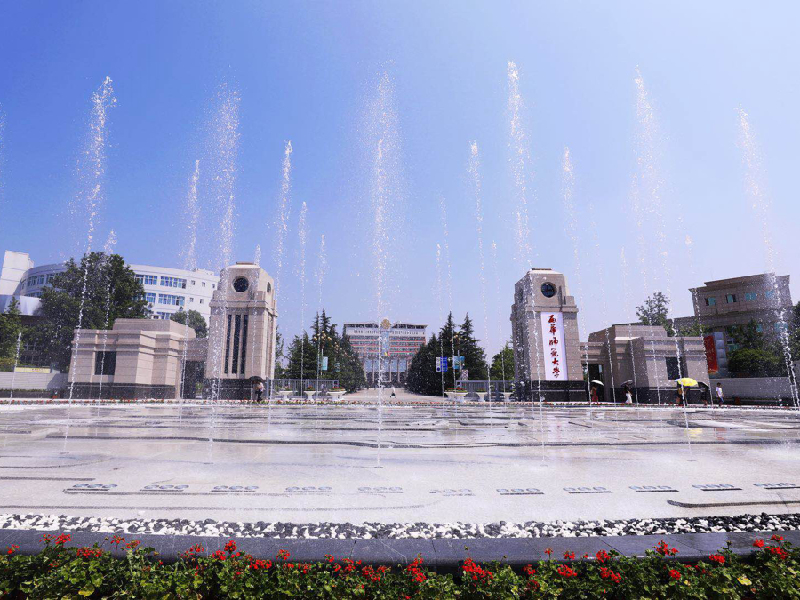
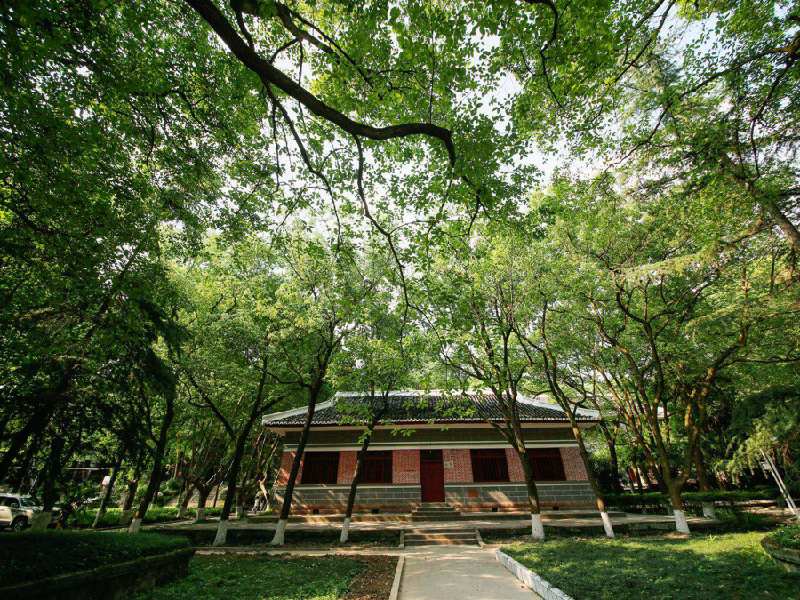


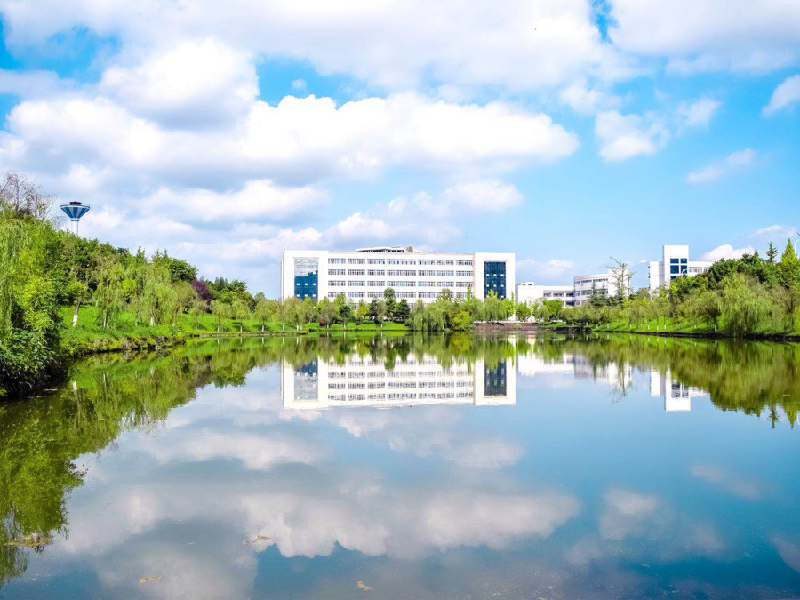
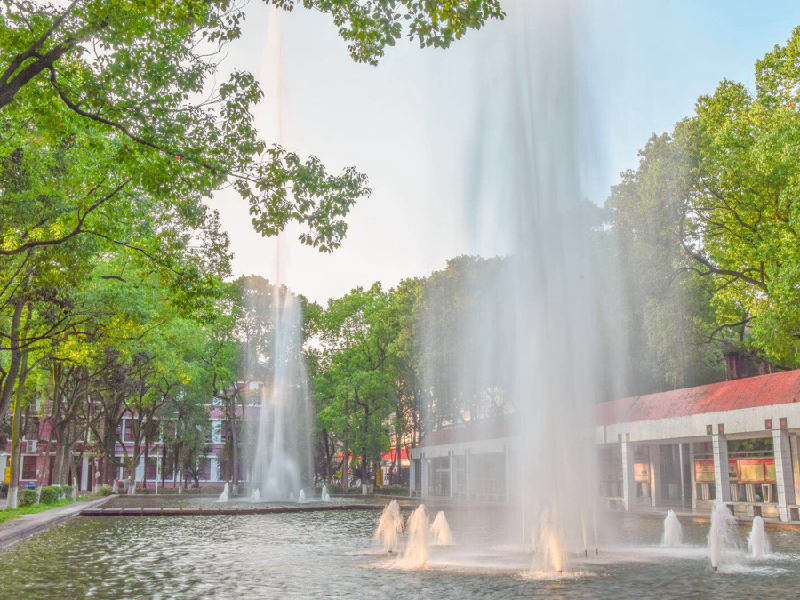
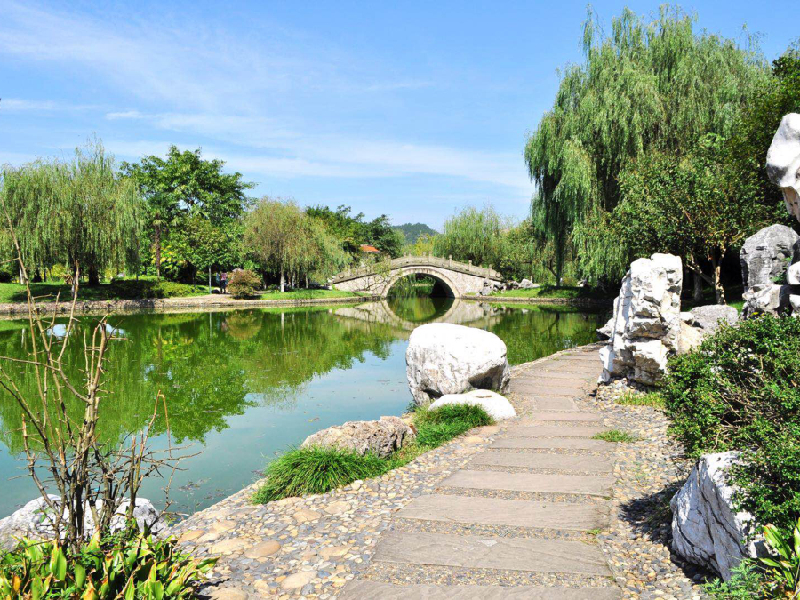

-
1.Yangshan Ancient Town International Military Tourism Resort
Yangshan Ancient Town International Military Tourism Resort is located in Yangshan Town, Jinxiang County, Southwest Shandong Province. Yangshan Ancient Town International Military Tourist Resort is a
Time 2019-03-02 -
2.Zigong Dinosaur Museum
Zigong Dinosaur Museum is located in the northeast of Zigong City, Sichuan Province, 11 kilometers from the city center. It is a large site museum built on the world famous "Dashanpu Dinosaur Fos
Time 2019-03-22 -
3.Cloth paste painting
Teng Teng is the founder of Teng's cloth paste painting. He was born in Fengning Manchu Autonomous County, Hebei Province in 1932. He is the director of Teng's cloth paste painting
Time 2019-04-04 -
4.Red boxing
Red boxing originated in Zhou and Qin Dynasties, became famous in Tang and Song Dynasties and prevailed in Ming and Qing Dynasties. It is an important link
Time 2019-05-03 -
5.Production Techniques of Bark Cloth of Li Nationality
Li bark cloth production technology is based on the bark of plants as raw materials, after beating technology to produce cloth technology.
Time 2019-05-12 -
6.Brow tune
Meihu Opera is a local traditional drama in Shaanxi Province. From the development of the floor stall rap and social fire, the floor stall and social fire performances always focus on singing. Its act
Time 2019-06-01 -
7.The Yi Nationality Plays Songs
The dance of the Yi nationality is colorful and varied. It is typical of the simple collective dance "Da Song" (also known as "Ta Song") with the entertainment of the masses. In Mi
Time 2019-07-12 -
8.Suni embroidery of the Yi nationality
Sani embroidery is a unique technology with a long history. There are many kinds of flower picking techniques, such as picking, embroidering, filling, receiving, buttoning, single-sided picking and do
Time 2019-07-12 -
9.The Bronze Drum Custom of the Zhuang Nationality
Bronze drum is a percussion instrument created by Pu and Yue people in ancient China. Up to now, it has a history of more than 2700 years. Guangxi has the largest number and the widest distribution. T
Time 2019-08-16 -
10.Southwest Jiaotong University
Southwest Jiaotong University is a national key university directly under the Ministry of Education. The first batch of national "double first-class", "211 project", "characte
Time 2019-08-31 -
11.Exhibition hall of taipingdu in Chishui
Gulin Taiping ferry, located in Taiping town at the intersection of the upper reaches of Chishui River and Gulin River, is the most important ferry for the Red Army to cross Chishui on the Long March, with an area of about 1.5 square kilometers. The residential buildings of the Qing Dynasty in the ancient streets of the town are well preserved, one after another
Time 2020-10-16 -
12.Biological resources in Dazhou
There are more than 400 species of vertebrates in Dazhou City, including 60 kinds of mammals, 230 kinds of birds, 14 kinds of reptiles, 10 kinds of amphibians and 85 kinds of fish. There are 52 species of national and provincial key protected wild an
Time 2020-12-20